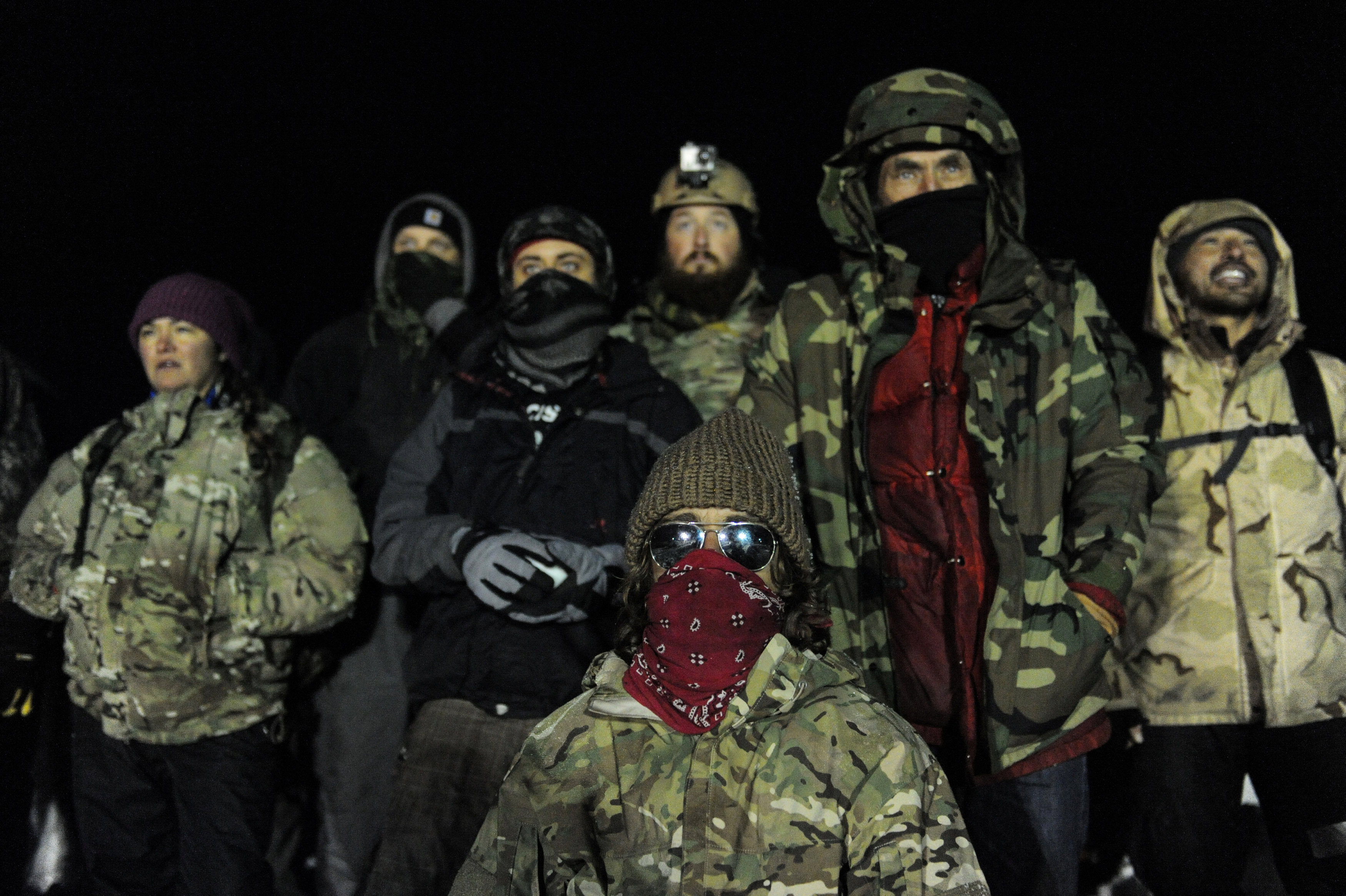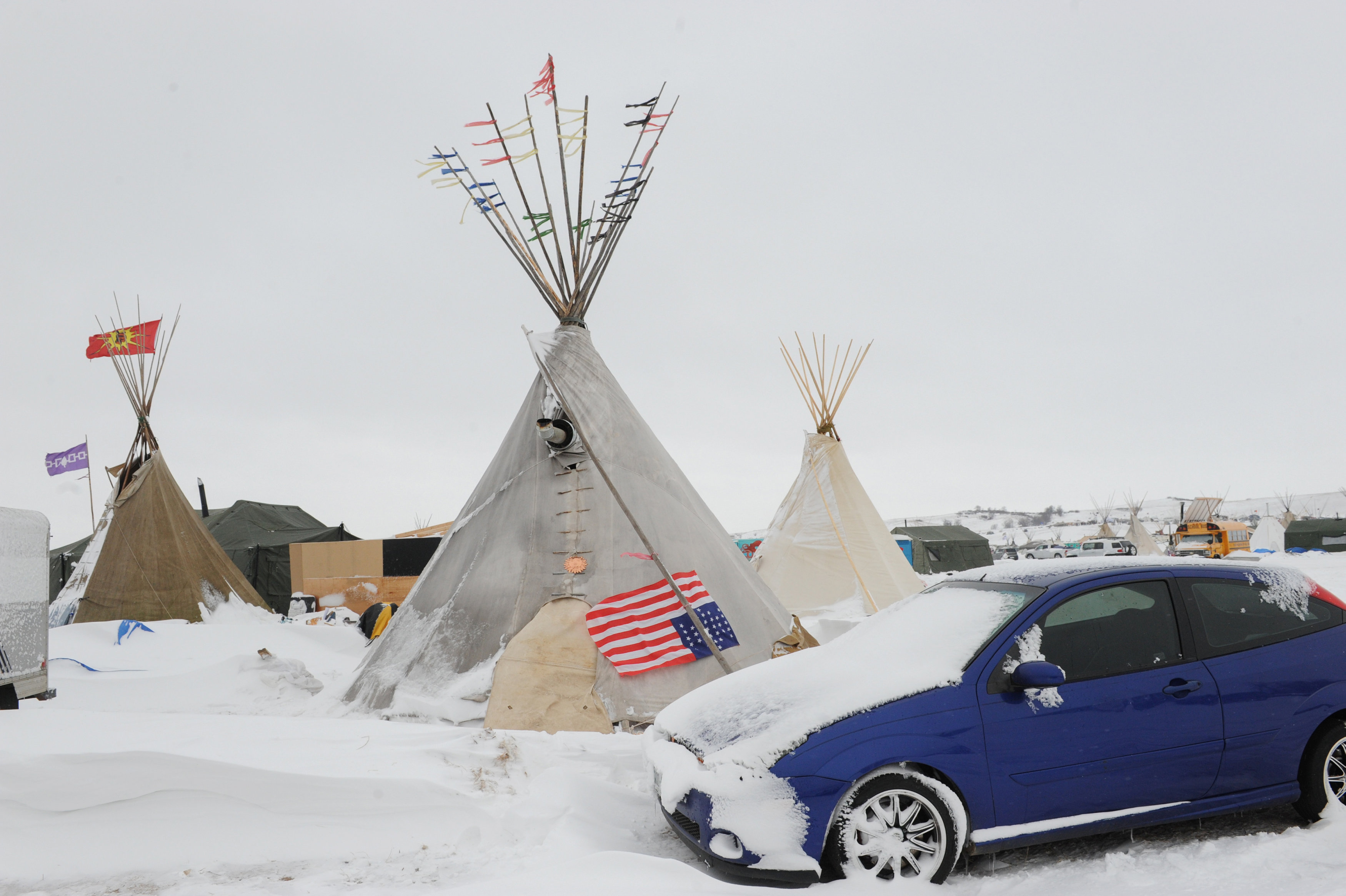
By Terray Sylvester
CANNON BALL, N.D. (Reuters) – Tensions have increased this week near the construction site of the Dakota Access pipeline, with repeated clashes between protesters and police ahead of Friday’s inauguration of President-elect Donald Trump, an unabashed fan of the $3.8 billion project.
Police used tear gas and fired bean-bag rounds to disperse crowds, and have arrested nearly 40 people since Monday, many of them on a bridge that has been the site of frequent confrontations, law enforcement officials said.
Demonstrators at the shrinking protest camp have voiced desperation and declining morale, citing weaker support from the local Standing Rock Sioux tribe that launched the effort last year and the backing that Trump, a Republican, will provide the pipeline once he takes office on Friday.
“It’s closing in on the inauguration, and people want to make sure that their voices are heard while they still have a chance,” said Benjamin Johansen, 29, a carpenter from Iowa who has been at the camp for two months. “There’s a very real possibility that once the new president is inaugurated, our voices won’t matter.”
This week’s clashes between protesters and police are the most serious since the U.S. Army Corps of Engineers denied an easement in December for the pipeline to travel under Lake Oahe.
Native Americans and environmental activists have said that the pipeline threatens water resources and sacred lands.
Members of the Standing Rock Sioux, whose reservation is near the pipeline, asked protesters to disperse following the Corps’ decision, but around 600 remain in the main camp, now called Oceti Oyate.
The tribe is asking that the camp be evacuated by Jan. 29, and is offering an alternate site on reservation land that avoids any risk of flooding. Tribal leaders and North Dakota Governor Doug Burgum have warned about potential flooding at the protest site in early March.
The call for the protest to end has left those still on site in a darker mood, said Amanda Moore, 20, an activist with Black Lives Matter.
“We’re stressed with Donald Trump’s inauguration coming so soon, and feeling that we have to stop the pipeline now,” she said.
Protesters and law enforcement faced off early Thursday morning on Backwater Bridge for the third straight night, with demonstrators throwing snowballs at officers and climbing onto a barricade before being pushed back.
Law enforcement fired a volley of bean bags and sponges at protesters at around 2 a.m., sending protesters fleeing from the ice- and snow-covered bridge, according to a Reuters witness. Police said they also used pepper spray.
The skirmish came as the Army began the process of launching an environmental study of the pipeline.
At least one protester was taken to the hospital, the Morton County Sheriff’s Department said in a statement. Since Monday, 37 have been arrested, adding up to 624 since August.
“They come and say they want to pray and want us to fall back, then they get aggressive and try and flank our officers and get behind us,” Maxine Herr, a spokeswoman for the sheriff’s department said. “What they say and what they do are two different things.”
Both Herr and protesters conceded that communication between the two sides had deteriorated in past months.
Kalisa Wight Rock, a volunteers from Georgia working as a medic, said focus shifting away from the protest had left some feeling abandoned after the widespread attention the opposition to the pipeline garnered last year.
“A lot of people think this is over and that we’re not still here,” he said.
(Additional reporting by Timothy Mclaughlin in Chicago; Editing by Ben Klayman and Jonathan Oatis)

















